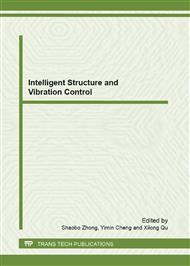p.901
p.906
p.910
p.915
p.919
p.924
p.929
p.934
p.939
To Optimize a BP Network System
Abstract:
The neural network has been introduced into the studies of credit risk assessment. However, the ratio of the dataset for training and testing is difficult to determine, so the neural network is not robust enough to give the judgment. Therefore, using the 2000 instances of personal consumer credit data set for approval of credit applications of a provincial-level China Construction Bank, for the BP neural network model, the study focused on the ratio of the dataset for training and testing. The results show that, when the ratio of the dataset for training and testing is 800:1200, the neural network model 2 for credit risk assessment has better performance. And it can achieve the desired accuracy and computational efficiency, so the BP network system for credit risk assessment is optimized.
Info:
Periodical:
Pages:
919-923
Citation:
Online since:
February 2011
Authors:
Keywords:
Price:
Сopyright:
© 2011 Trans Tech Publications Ltd. All Rights Reserved
Share:
Citation:


